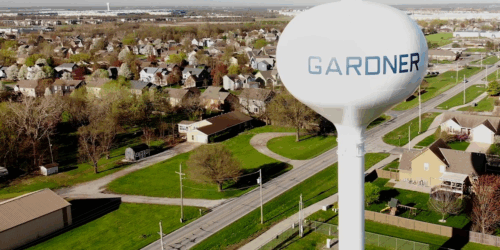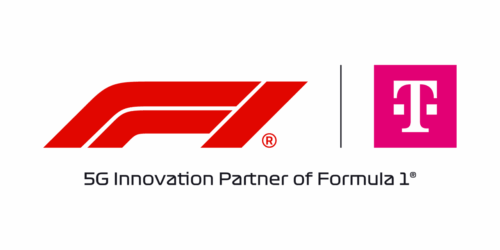Welcome to Unpacking 5G Advanced, a blog series where we break down the most transformative innovations shaping the future of connectivity. As 5G evolves into its next phase, we’re spotlighting our 5G Advanced network’s powerful features that not only set T-Mobile apart but also showcase our technology and leadership — and the real-world breakthroughs they enable for our customers and partners.
The next chapter of 5G is unfolding and T-Mobile is writing the opening lines.
As part of our nationwide rollout of 5G Advanced, we’re deploying one of its most important capabilities: Low Latency, Low Loss, Scalable Throughput (L4S).
L4S consistently delivers low latency, minimal packet loss and real-time responsiveness — even under heavy traffic. It’s a major step forward for performance-driven use cases where every millisecond matters, including cloud gaming, video calling, Extended Reality (XR) and even remote driving. And it’s already proving valuable in real-world trials.
While L4S has been used in wired environments for years, no one had scaled it in wireless — until now. T-Mobile is the first to unlock L4S across a wireless environment at scale, and we’re already seeing the difference it can make.
Here’s an example of L4S in motion.
The L4S Advantage — Only at T-Mobile
While the other guys still depend on legacy 4G/LTE cores, T-Mobile built a nationwide standalone (SA) 5G network from the ground up. Our clean, all-5G foundation gives us the flexibility to implement and scale innovations like L4S, and it sets the stage for more advanced capabilities like network slicing.
Because everything flows through a single, optimized 5G core, we can deploy programmable features like L4S at scale while laying the groundwork for advanced network slicing and differentiated service tiers.
As part of our broader push toward a programmable 5G network, we’ve also been testing L4S to explore how exposing real-time network data can help our partners and other innovators fine-tune their app experiences. That’s where the full value of this work starts to show up.
Remote Driving with Vay: Precision From Miles Away
Imagine operating a car from a completely different location. We partnered with Vay, a Berlin-based company developing automotive-grade remote driving technology, to show what L4S could do in high-stakes, low-latency scenarios.
Using our 5G Advanced network with L4S, Vay’s remote drivers experience predictable, consistent latency. Remote drivers said it felt like they were physically in the car, even in high-traffic, congested scenarios. This kind of ultra-low lag and responsiveness is a game-changer for mobility, logistics, and time-critical safety applications.
XR Trials with Qualcomm and Ericsson: Immersion, Without the Nausea
XR is poised to transform how we work, play and connect — but latency and jitter have long held it back. In recent tests with Qualcomm and Ericsson, we used a slim smart glasses form factor to put L4S to work on our 5G SA network.
The results? Crystal-clear visuals, ultra-smooth frame delivery and significantly reduced motion sickness and dizziness. These trials underscore how L4S can pave the way for mainstream XR from niche to mainstream, especially in consumer scenarios where comfort and continuity are essential.
Cloud Gaming: Bringing Console-Like Performance to Mobile
Cloud gaming needs fast reactions and zero interruptions. L4S is already helping deliver that.
NVIDIA has publicly enabled L4S support in GeForce NOW, helping reduce latency and packet loss during gameplay. Paired with T-Mobile’s 5G Advanced network, players get its powerful recipe for delivering buttery-smooth controls, less jitter and gameplay that feels closer to a local gaming console — even under network congestion.
L4S helps keep gamers locked in and lag-free.
FaceTime and Video Calling: Seamless Conversations, Even in Crowds
Whether you’re hopping on a FaceTime call or navigating a crowded airport terminal, L4S helps keep your connection crisp and clear. By dynamically adjusting for network congestion, it reduces stutters, frozen frames, and garbled audio — making real-time communication smooth and reliable.
We’ve been testing L4S for its applicability across real-world use cases like video calling. It’s yet another example of how T-Mobile’s 5G Advanced innovations can enhance the everyday moments people rely on.
Built for What’s Next
And we’re just getting started. L4S will serve as a foundational input for our network slicing framework — enabling smarter decisions and more adaptive performance tiers for XR, gaming, video and other latency-sensitive use cases.
Soon, these capabilities will expand into enterprise offerings, unlocking ultra-responsive experiences across industries. And with commercial deployments right around the corner, we’re excited to bring this technology even closer to our customers.
With L4S included in 3GPP Release 18 and our 5G Advanced network already live, T-Mobile is continuing to push the frontier of programmability — aligning with our long-term vision of a smarter, more responsive network.
By sharing real-time network conditions — such as how busy a cell tower’s radio is (known as radio loading) — through L4S, we’re empowering partners like Vay, Apple and others to optimize how their apps perform in the moment. That’s what a programmable network looks like in action.





